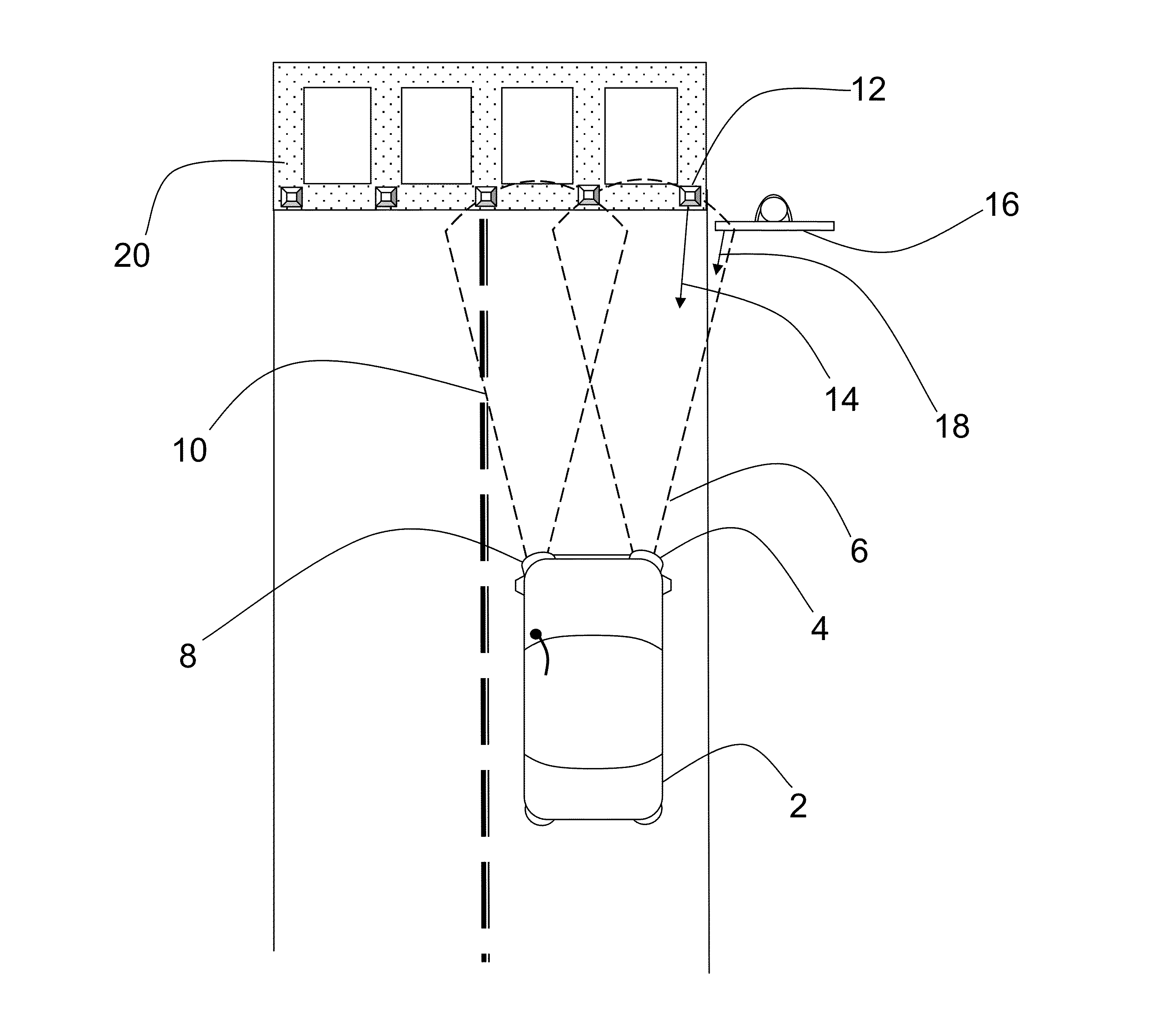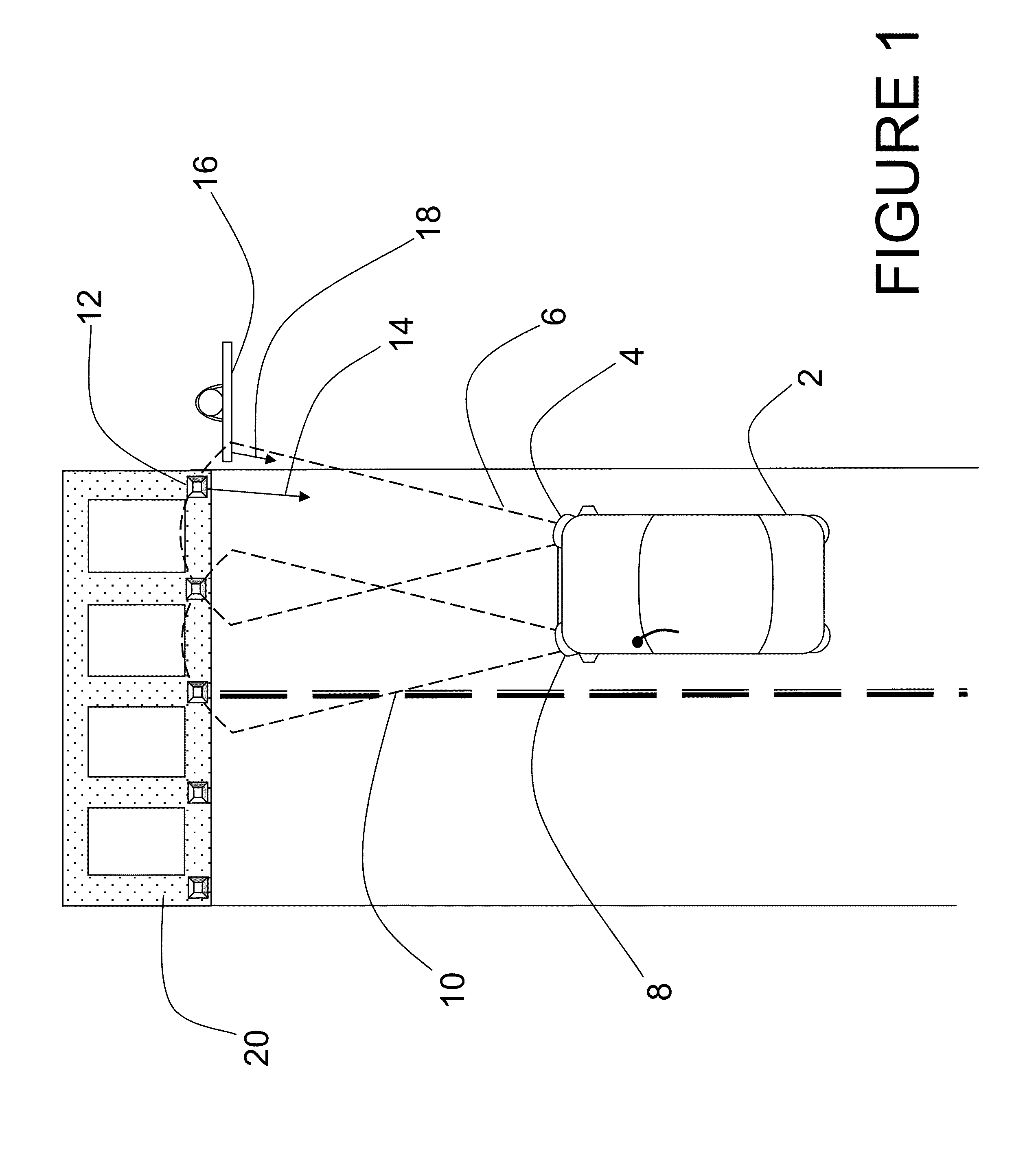Beam steering ladar sensor
a beam steering and ladar sensor technology, applied in the field of laser sensors, can solve the problems of holographic capture systems, stereo systems, inability to demonstrate adequate performance in this application, etc., and achieve the effect of low cost and low parasitic packaging
- Summary
- Abstract
- Description
- Claims
- Application Information
AI Technical Summary
Benefits of technology
Problems solved by technology
Method used
Image
Examples
first embodiment
[0046]FIG. 4 is a block diagram of a ladar sensor which describes both long range ladar sensors 34 and short range sensors 32 typical of the preferred embodiment. Major improvements described herein include the addition of a beam steering mechanism 70, an optical gain block 76, an electronic amplifier array 80, and new detector and focal plane array (FPA) packaging options. The first embodiment provides a 128×128 or 128×64 detector array 78 of light detecting elements which is stacked atop a readout integrated circuit 82 using a hybrid assembly method. In other embodiments of the design, M×N focal plane arrays of light detecting elements with M and N having values from 2 to 1024 and greater are anticipated. The functional elements depicted in FIG. 4 may first be described with respect to the elements of a typical long range ladar sensor 34. A control processor 58 controls the functions of the major components of the ladar sensor 34. Control processor 58 connects to pulsed laser tran...
second embodiment
[0056]FIG. 6B shows a central section view of beam steering mechanism 70. Several embodiments of the beam steering mechanism 70 are anticipated, and each is described in association with a FIGS. 6A, 6B, 6C, and 6D. The operating mode of the beam steering mechanism 70 will be then described in connection with the operations of the ladar sensor (32, 34). A silicon substrate 150 is processed via photolithography and MEMs fabrication techniques to have a cavity 156, cantilevered bending element 158, and two recessed sections for mounting an edge emitting laser 152, and a beam conditioning lens 154 on a first surface. Beam conditioning lens 154 is typically a ball lens or a rod lens, but may be of another type useful for circularizing and / or collimating the elliptical output beam of edge emitting laser 152. The output beam of edge emitting laser 152 is directed by lens 154 to fall on the mirror surface 160 of bending element 158. Mirror surface 160 may be gold, silver, aluminum, nickel, ...
third embodiment
[0057]FIG. 6C shows a central section view of beam steering mechanism 70. A first silicon substrate 168 is processed via photolithography and MEMs fabrication techniques to have a cavity 178, and a first cantilevered bending element 180, and two recessed sections for mounting an edge emitting laser 170, and a beam conditioning lens 172 on the top surface. A third recessed section 175 is formed by MEMs techniques, such as chemical mechanical polishing. Recessed section 175 has an angled profile on the sidewalls, and a mirrored surface 174. Beam conditioning lens 172 is offset vertically from the centerline of the output beam of laser 170, and redirects the beam onto mirrored surface 174. Beam conditioning lens 172 is typically a ball lens or a rod lens, but may be of another type useful for circularizing and / or collimating the elliptical output beam of edge emitting laser 170. The optical beam is then directed against the mirror surface 190 of a second bending element 188. Second ben...
PUM
 Login to View More
Login to View More Abstract
Description
Claims
Application Information
 Login to View More
Login to View More - R&D
- Intellectual Property
- Life Sciences
- Materials
- Tech Scout
- Unparalleled Data Quality
- Higher Quality Content
- 60% Fewer Hallucinations
Browse by: Latest US Patents, China's latest patents, Technical Efficacy Thesaurus, Application Domain, Technology Topic, Popular Technical Reports.
© 2025 PatSnap. All rights reserved.Legal|Privacy policy|Modern Slavery Act Transparency Statement|Sitemap|About US| Contact US: help@patsnap.com



